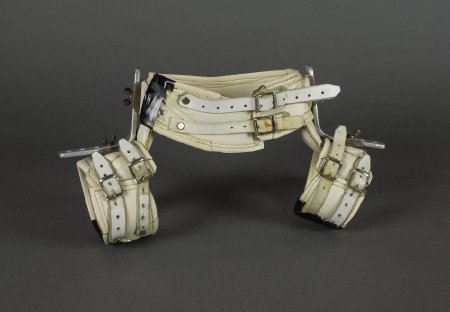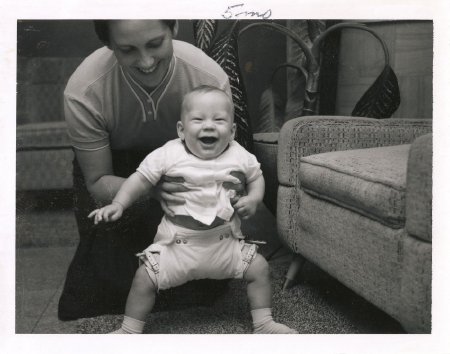Description:
Hip Abduction Brace
According to the International Hip Dysplasia Institute, 1 in 10 infants are born with a type of hip issue. Developmental dysplasia, or dislocation, is a condition where the ball and socket of the hip joint does not form properly. Babies are especially prone to this issue because of shallow or soft hip joints at birth or from being born in a breech position. Sometimes genetics may play a role and girls are four times more likely to have hip issues than boys. Treatment depends on the age of the child and the severity of the condition. Mild looseness in the hips may resolve itself with movement exercises. For infants with more pronounced issues, a common non-surgical option is to use a brace to realign the hips.
This month's featured artifact is a 1950s era hip abduction brace worn by Walt Nebel, Jr. Braces like this are worn by infants under 6 months old to keep the infant's hips and knees bent, encouraging normal development of the hip joints. The child usually wears the brace for several weeks, only taking it off for baths and diaper changes. Walt's brace was made out of rigid leather and metal. Wearing the brace helped Walt grow up with normal hip function. Modern babies wear similar devices that are made out of friendlier materials: soft plastic, foam, and velcro.
As a museum, documenting changes in technology over time in our community isn't just about the digital world or machinery. A simple brace reveals much about how residents' life experiences have (or haven't!) changed over time and how access to modern medical care has affected each generation.
Object credit:
Ketchikan Museums, KM 2019.2.40.85
Photo caption & credit:
Walt Nebel, Jr., age 5 months, wearing the hip dysplasia brace.
Ketchikan Museums, KM 2019.2.40.84


